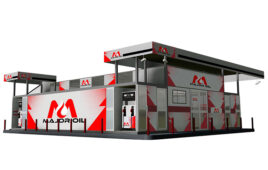 Industry performance suggests that the North American beverage industry may be immune to business cycles.
Industry performance suggests that the North American beverage industry may be immune to business cycles.
A new study of financial trends in the North American beverages industry provides an overview of the industry trends between fiscal year 2009 and June 30, 2015. Three broad segments make up the industry, and these are brewers, distillers and vintners and soft drinks.
Brewers and distillers represent alcoholic beverages, while vintners and soft drinks represent non-alcoholic beverages. Each segment is analyzed in isolation as well as in tandem with the entire beverages industry. The study provides insight into the different trends and the rationale behind merger and acquisition (M&A), private equity and venture capital deals, as well as the financial ratios that gauge profitability, liquidity, activity and solvency.
Executive Summary
– The North American beverages industry is fairly immune to business cycles. The overall performance of the industry has been quite stable, but analysis shows significant differences in the dynamics that shape each segment.
– The alcoholic beverages segment is poised for strong growth while the soft drinks segment will remain dependent on bottled water, fruit juices and other non-carbonated drinks.
– North America is one of the biggest consumers of alcohol both by volume and dollar spending. The overall spending on alcoholic beverages is likely to increase despite a decline in the consumption of alcohol by volume, indicating steady increase in the unit price of alcoholic beverages.
– The emergence of the Millennial demographic group has brought in a large amount of disposable income, and their demand for premium alcoholic brands and originality in its making have driven this trend.
– The soft drinks segment has seen a steady decline in revenue mainly due to growing health consciousness among customers, especially concerning diabetes and the ill effects of excessive caffeine consumption.
– The U.S. government’s 2011 Food Safety and Modernization Act (FSMA) minimizes health hazards related to food and beverages. The regulations under FSMA have had a significant impact on the consumption of soft drinks in North America and have increased the cost of production for soft drink manufactures who must ensure regulatory compliance.
– Beverage manufacturers, especially in the soft drinks segment, are now focusing on largescale automation with the use of robotics to bring about higher productivity and larger cost efficiency through economies of scale.
– The cost of ensuring high-quality packaging and strong distribution networks has also been rising constantly during the study period. Beverage manufacturers actively sought merger and acquisition (M&A) opportunities in packaging and distribution to gain a competitive edge through forward integration.
– Private equity (PE) and venture capital (VC) activity has been buoyant in the bottled water and wine sub-segments. Several family owned wineries have been needing PE and VC funding to take their agricultural expertise in vineyards to the market.
– The increasing demand for clean drinking water and the higher levels of sophistication in its purification process have brought about many startups in the bottled water segment.




